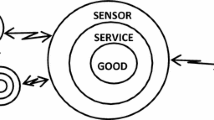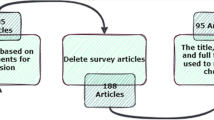Abstract
With the growth of mobile devices, consumer networks make the life more convenient and faster. Consumer networks consider mobile video as an important communication mode. Mobile video transmission faces complex environments, and the quality of service (QoS) of mobile video networks is very important for mobile entertainment applications. To evaluate the QoS of mobile video networks, outage probability (OP) is an important criterion. However, the mobile video networks gradually become complex, dynamic, and variable, which make it increasingly more difficult to predict the OP performance. In this paper, we investigate the OP performance analysis and prediction. The OP expressions are derived in exact closed-form. Then, based on the characteristics of mobile data, we have established a prediction model based on generalized regression (GR) neural network. A GR-based OP performance intelligent prediction algorithm is proposed. Compared with other methods, our proposed approach can obtain a better prediction effect. The prediction accuracy of the proposed approach can be increased by 64% and 58%, respectively. The running time is also the shortest.


















Similar content being viewed by others
References
Khan WZ, Aalsalem MY, Khan MK (2019) Communal acts of IoT consumers: a potential threat to security and privacy. IEEE Trans Consum Electron 65(1):64–72
Sattar D, Matrawy A (2019) Optimal slice allocation in 5G core networks. IEEE Netw Lett 1(2):48–51
Garro E, Fuentes M, Carcel JL, Chen H, Mi D, Tesema F, Gimenez JJ, Gomez-Barquero D (2020) 5G mixed mode: NR multicast-broadcast services. IEEE Trans Broadcast 66(2):390–403
Hou XM, Zhang FQ, Liu D (2017) Dynamic coordination process based on predictive graph in mobile cloud environment. J Liaocheng Univ Nat Sci Ed 30(4):96–100
Xu LW, Wang H, Gulliver TA (2020) Outage probability performance analysis and prediction for mobile IoV networks based on ICS-BP neural network. IEEE Internet Things J. https://doi.org/10.1109/JIOT.2020.3023694
Li JL, He SF, Wong HC, Lo SL (2019) Proposal-driven segmentation for videos. IEEE Signal Process Lett 26(8):1098–1102
Chen B, Gu JH, Zhu M, Yan CP, Zhou YJ, Gu PP (2020) Deep reinforcement learning for 3D resource allocation in OFDMA-PON and performance analysis. J Liaocheng Univ Nat Sci Ed 33(6):40–46
Cheng T, Li WB, Ng CSH, Chiu PWY, Li Z (2019) Visual servo control of a novel magnetic actuated endoscope for uniportal video-assisted thoracic surgery. IEEE Robot Autom Lett 4(3):3098–3105
Chen J, Lu DJ, Zhang GJ, Qiao JP, Liu PS, Han R (2019) Cost optimization for the coupled video delivery networks. IEEE Access 2019(7):79136–79146
Nightingale J, Garcia PS, Calero JMA, Wang Q (2018) 5G-QoE: QoE modelling for ultra-HD video streaming in 5G networks. IEEE Trans Broadcast 64(2):621–634
Purwanto D, Pramono RRA, Chen YT, Fang WH (2019) Three-stream network with bidirectional self-attention for action recognition in extreme low resolution videos. IEEE Signal Process Lett 26(8):1187–1191
Su Z, Dai MH, Xu QC, Li RD, Fu S (2020) Q-Learning-based spectrum access for content delivery in mobile networks. IEEE Trans Cogn Commun Netw 6(1):35–47
Zhang YJ, Rong F, Wang Z (2020) Research on cold chain logistic service pricing-based on tripartite Stackelberg game. Neural Comput Appl 32(1):213–222
Zhang TC, Mao SW (2019) Cooperative caching for scalable video transmissions over heterogeneous networks. IEEE Netw Lett 1(2):63–67
Nguyen DD, Bao VNQ, Chen QC (2019) Secrecy performance of massive MIMO relay-aided downlink with multiuser transmission. IET Commun 13(9):1207–1217
Peng JS (2017) Cross-Layer analysis of multiuser MIMO systems employing AMC with delayed ARQ feedback. Wirel Pers Commun 95(3):3013–3030
Qian JH, Lops M, Zheng L, Wang XD, He ZS (2018) Joint system design for coexistence of MIMO radar and MIMO communication. IEEE Trans Signal Process 66(13):3504–3519
Rihan M, Huang L (2018) Optimum co-design of spectrum sharing between MIMO radar and MIMO communication systems: an interference alignment approach. IEEE Trans Veh Technol 67(12):11667–11680
Zhou JS, Tian DX, Wang YP, Sheng ZG, Duan XT, Leung VCM (2020) Reliability-optimal cooperative communication and computing in connected vehicle systems. IEEE Trans Mob Comput 19(5):1216–1232
Yan JJ, Wu DP, Wang RY (2019) Socially aware trust framework for multimedia delivery in D2D cooperative communication. IEEE Trans Multimed 21(3):625–635
Zeng R, Liu TJ (2018) A novel Quasi orthogonal space frequency code for cooperative communication. IEEE Commun Lett 22(3):582–585
Prasanna AL, Kumar V, Dhok SB (2020) Cooperative communication and energy-harvesting-enabled energy-efficient design of MI-based clustered nonconventional WSNs. IEEE Syst J 14(2):2293–2302
Karagiannidis GK, Sagias NC, Mathiopoulos PT (2007) N*Nakagami: a novel stochastic model for cascaded fading channels. IEEE Trans Commun 55(8):1453–1458
Xu LW, Wang JJ, Zhang H, Gulliver TA (2017) Performance analysis of IAF relaying mobile D2D cooperative networks. J Franklin Inst 354(2):902–916
Xu LW, Wang JJ, Liu Y, Shi W, Gulliver TA (2018) Outage performance for IDF relaying mobile cooperative networks. Mob Netw Appl 23(6):1496–1501
Yang ZX, Ma PY, Li HJ (2020) Innovative product diffusion forecasting combined Bass model and LTV. J Liaocheng Univ Nat Sci Ed 33(4):26–32
Xu LW, Wang H, Lin W, Gulliver TA, Le KN (2019) GWO-BP neural network based OP performance prediction for mobile multiuser communication networks. IEEE Access 7:152690–152700
Zhang J, Yuan XG (2020) HSI classification algorithm based on few-shot learning. J Liaocheng Univ Nat Sci Ed 33(6):1–11
Rezvani S, Wang XZ, Pourpanah F (2019) Intuitionistic fuzzy twin support vector machines. IEEE Trans Fuzzy Syst 27(11):2140–2151
Xu KK, Yang HD, Zhu CJ (2019) A novel extreme learning machine-based Hammerstein–Wiener model for complex nonlinear industrial processes. Neurocomputing 358(9):246–254
Gitoee A, Faridi A, France J (2018) Mathematical models for response to amino acids: estimating the response of broiler chickens to branched-chain amino acids using support vector regression and neural network models. Neural Comput Appl 30(8):2499–2508
Xu LW, Wang JJ, Wang H, Gulliver TA, Le KN (2020) BP neural network-based ABEP performance prediction for mobile Internet of Things communication systems. Neural Comput Appl 32(20):16025–16041
Alam MS, Gazder U (2020) Shear strength prediction of FRP reinforced concrete members using generalized regression neural network. Neural Comput Appl 32(11):6151–6158
Anuragi A, Sisodia DS, Pachori RB (2020) Automated alcoholism detection using fourier-bessel series expansion based empirical wavelet transform. IEEE Sens J 20(9):4914–4924
Anand SV, Selvakumari RS (2019) Noninvasive method of epileptic detection using DWT and generalized regression neural network. Soft Comput 23(8):2645–2653
Jondhale SR, Deshpande RS (2019) Kalman filtering framework-based real time target tracking in wireless sensor networks using generalized regression neural networks. IEEE Sens J 19(1):224–233
Talha B, Patzold M (2011) Channel models for mobile-to-mobile cooperative communication systems. IEEE Veh Technol Mag 6(2):33–43
Gong FK, Ye P, Wang Y, Zhang N (2012) Cooperative mobile-to-mobile communications over double Nakagami-m fading channels. IET Commun 6(18):3165–3175
Gradshteyn I, Ryzhik I (2007) Table of integrals, series and products, 7th edn. Academic Press, San Diego
Al-Mahasneh AJ, Anavatti SG, Garratt MA, Pratama M (2019) Stable adaptive controller based on generalized regression neural networks and sliding mode control for a class of nonlinear time-varying systems. IEEE Trans Syst Man Cybern Syst. https://doi.org/10.1109/TSMC.2019.2915950
Huang W, Oh SK, Pedrycz W (2018) Hybrid fuzzy wavelet neural networks architecture based on polynomial neural networks and fuzzy set/relation inference-based wavelet neurons. IEEE Trans Neural Netw Learn Syst 29(8):3452–3462
Acknowledgements
This research was supported by the Shandong Province Natural Science Foundation (No. ZR2017BF023), the National Natural Science Foundation of China (No. 61702295), the Opening Foundation of Fujian Provincial Key Laboratory of Information Processing and Intelligent Control, Minjiang University (No. MJUKF-IPIC202009), the Opening Foundation of Key Laboratory of Opto-Technology and Intelligent Control (Lanzhou Jiaotong University), The Ministry of Education (No. KFKT2020-09), the Shandong Province Colleges and Universities Young Talents Initiation Program (No. 2019KJN047), the Shandong Province Postdoctoral Innovation Project (No. 201703032), and the Doctoral Found of QUST (No. 1203043003480,010029029).
Author information
Authors and Affiliations
Corresponding author
Ethics declarations
Conflict of interest
The authors declare that they have no conflict of interest.
Additional information
Publisher's Note
Springer Nature remains neutral with regard to jurisdictional claims in published maps and institutional affiliations.
Rights and permissions
About this article
Cite this article
Xu, L., Wang, H., Li, H. et al. QoS intelligent prediction for mobile video networks: a GR approach. Neural Comput & Applic 33, 3891–3900 (2021). https://doi.org/10.1007/s00521-020-05441-1
Received:
Accepted:
Published:
Issue Date:
DOI: https://doi.org/10.1007/s00521-020-05441-1




